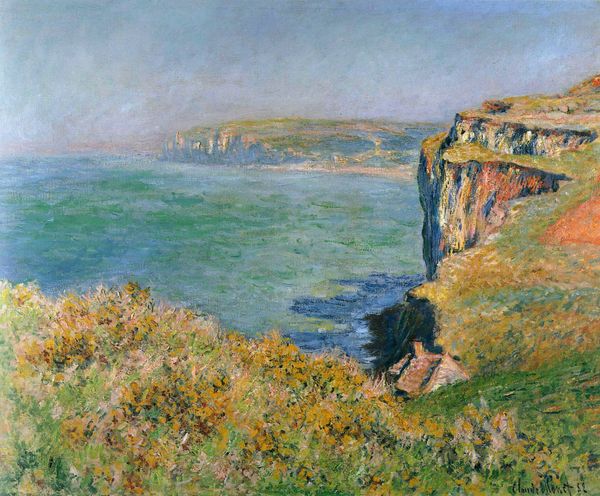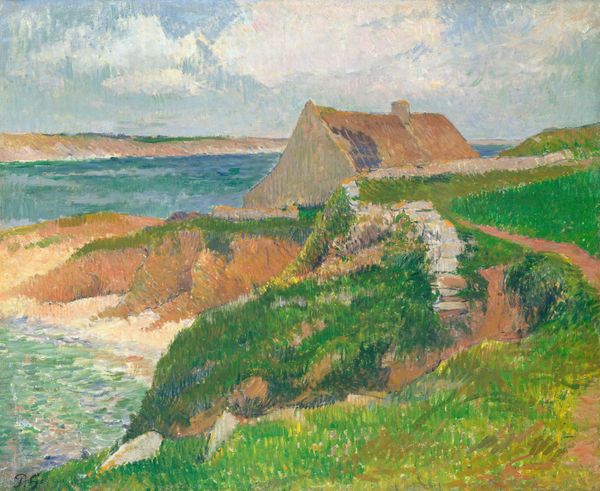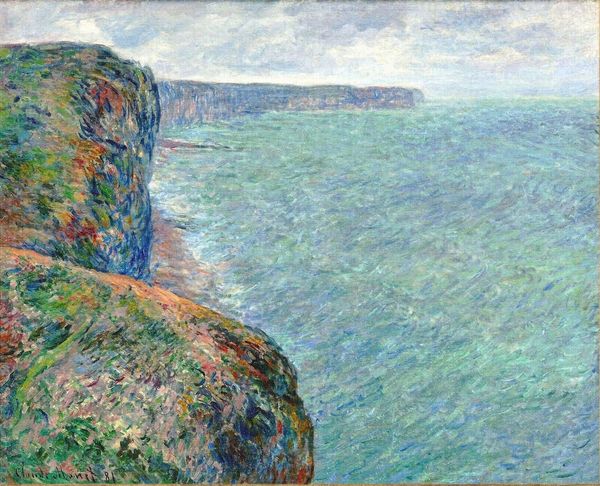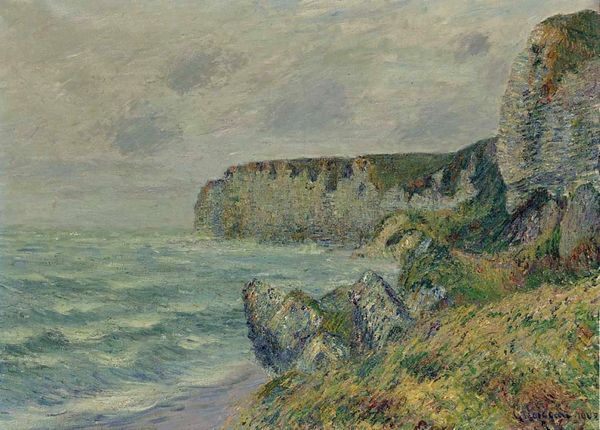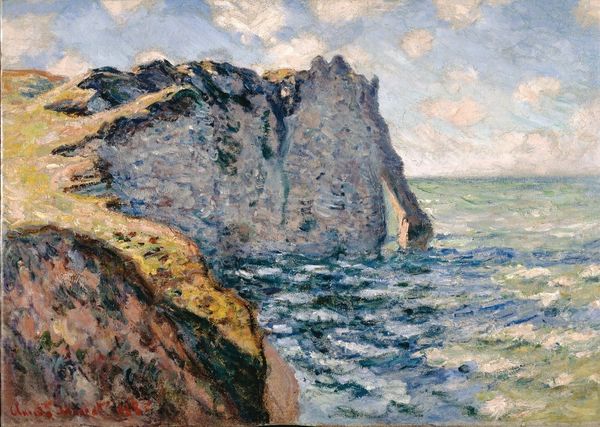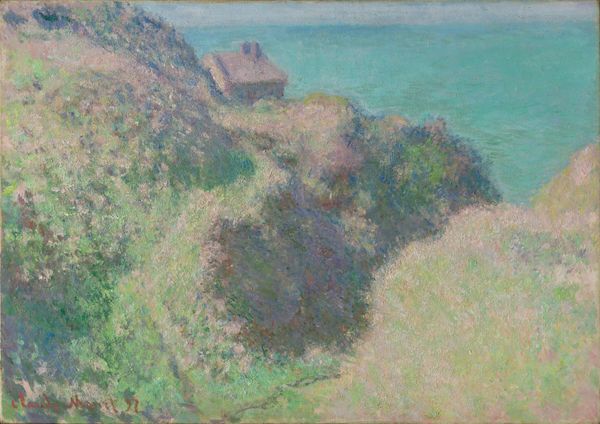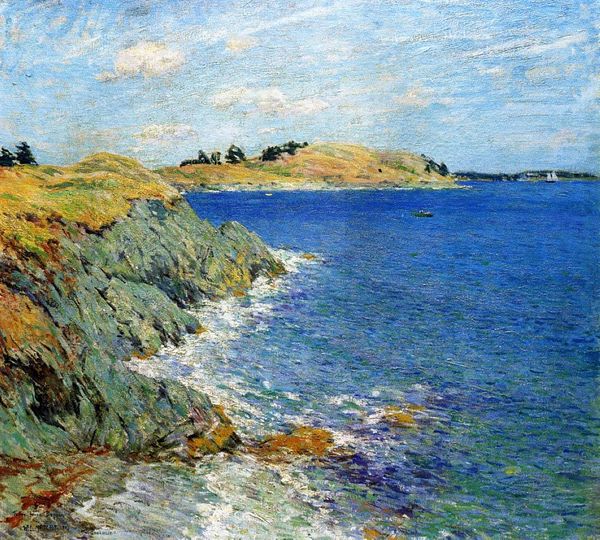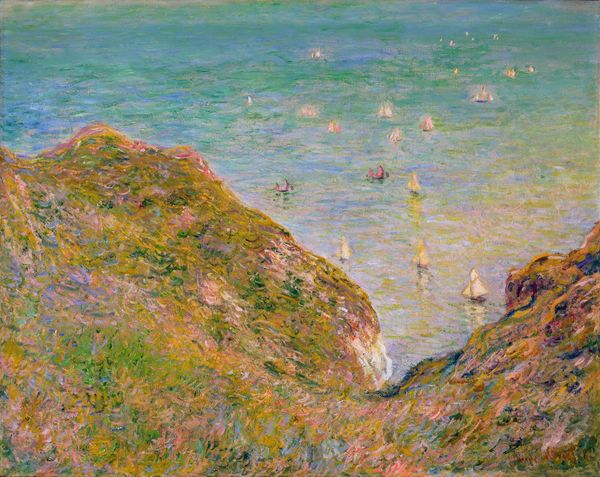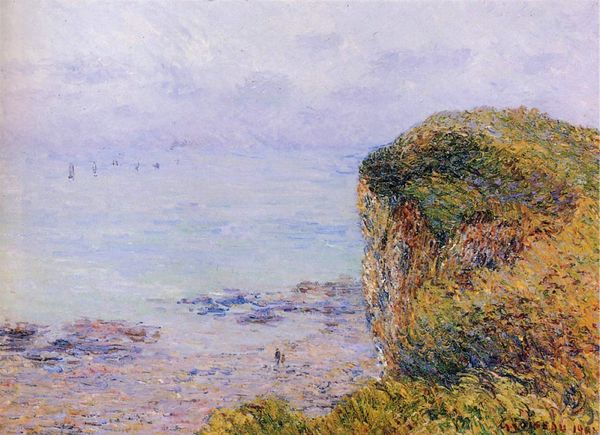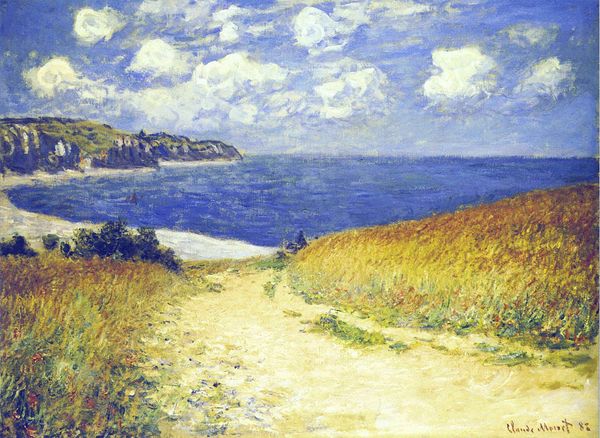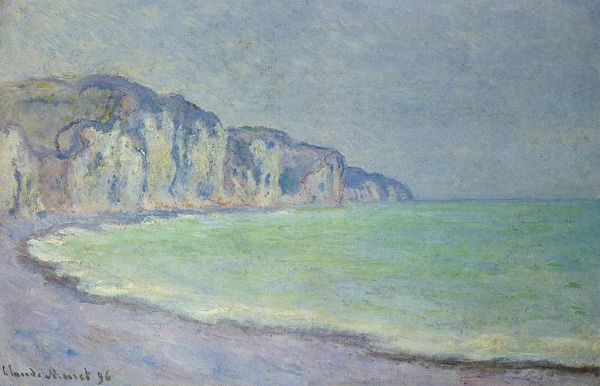
painting, plein-air, oil-paint
#
cliff
#
painting
#
impressionism
#
plein-air
#
oil-paint
#
landscape
#
impressionist landscape
#
oil painting
#
realism
Copyright: Public domain
Editor: Here we have Claude Monet's "Edge of the Cliff at Pourville," created in 1882 using oil paints. I am immediately struck by the contrast between the solid cliff and the ephemeral, shimmering sea. What do you see in this piece? Curator: The cliff face acts as a grounding force, doesn’t it? But also consider what it signifies. Cliffs have, across cultures, represented boundaries, both literal and metaphorical. What psychological weight does a precipice hold? Editor: A sense of danger, certainly! Maybe even the unknown? Curator: Precisely. The edge invites reflection on what lies beyond, what is possible, and what is forbidden. Then think about how Monet captures the fleeting light on the water. Doesn't that suggest the passage of time and the constant state of change in life? Editor: It does! So the painting holds both permanence in the cliff, and impermanence in the water and sky. Are there other symbols? Curator: Notice the absence of human figures. While figures occasionally appear in Monet's seascapes of this time, the cliffs in "Edge of the Cliff" offer an opportunity for self-reflection in the viewer. We contemplate the enormity of nature, but perhaps our place in it. It invites us to question the stability of existence when faced with an abyss. Do you agree? Editor: Yes, absolutely. The symbols encourage the viewer to reflect. I see that so much more clearly now. Curator: It’s amazing what symbols can do to the eye and mind of a viewer. They’ve held the attention of countless generations through history. Editor: I'll definitely be thinking more about symbolic weight when I look at landscapes from now on.
Comments
No comments
Be the first to comment and join the conversation on the ultimate creative platform.
